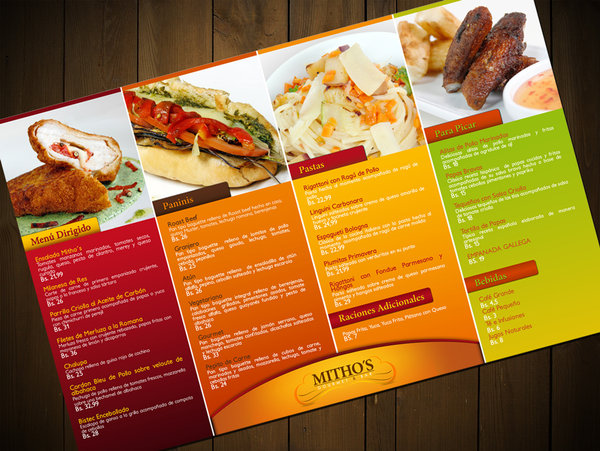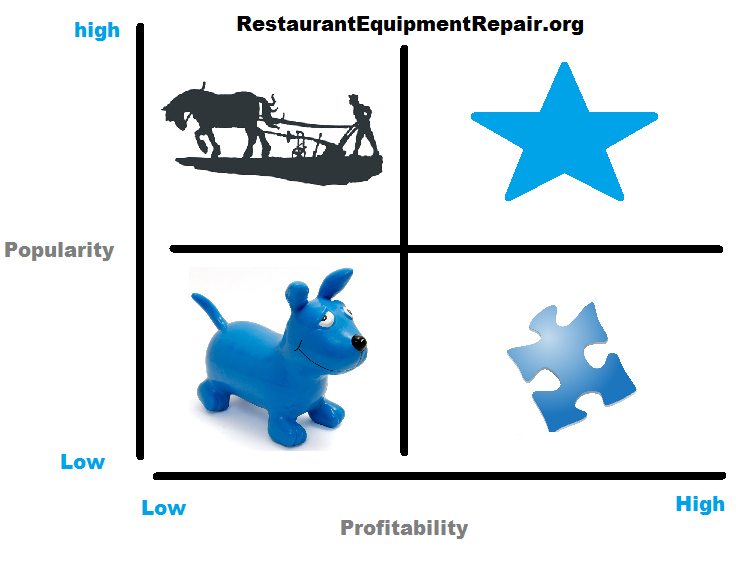The primary objective of menu engineering is to maximize a firm’s profitability by subconsciously encouraging customers to buy what you want them to buy, and discourage them from buying items you don’t want them to buy.
“In its truest sense, the term menu engineering refers to the specific restaurant menu analysis methodology developed by Michael L. Kasavana, Ph.D. and Donald J. Smith at the Michigan State University School of Hospitality Business in 1982.” [1]
Most people follow a simple four step process when engineering a menu, and that is as follows:
Step 1. Cost your menu
Step 2. Organize your menu
Step 3. Design your menu
Step 4. Test and tweak your menu design.
NOTE: All steps are critical, skipping any one step can result in a whole lot of wasted time and effort.
Cost Your Menu
Costing your menu is a pain, but it’s needed for the steps that follow. Knowing your most profitable dishes is a critical part of the next step (you can’t properly place your most profitable dishes if you don’t know which dishes are your most profitable.)
It’s been said that nearly 80% of restaurants don’t cost their menu, and another 5% cost their menus incorrectly. This means that taking the time to do this correctly can potentially give you an edge over 85% of your competition.
To “properly cost a menu” means using the same person and the same method to cost your menu each time costs need adjusting. Different people will come up with different costs, and it’s important that things stay consistent for the sake of accuracy.
Organize Your Menu
It is suggested that you divide your menu into “categories” and “sections.”
First, divide your menu into categories, and then divide those categories into sections.
Categories
The list of what is considered a category is not set in stone, but for some guidance, a common list of categories would include: Appetizers, Entrees, Desserts, and Drinks.
Sections
Sections refers to the way you further break down a category. As an example you might break the entree category down into the following sections: Vegetarian Entrees, Seafood Entrees, and Meat Entrees. Or you might break down the Drinks category in these sections: Alcoholic Drinks and Nonalcoholic Drinks.
After you split your menu into categories and sections, you’ll be evaluating each menu item by profitability and popularity so that you can decide what stays and what goes or what gets moved to the most-viewed sections of the menu. To make this easier, it is suggested that you divide all menu items into 1 of 4 quadrants (Plow Horses, Stars, Dogs and Puzzles.)
Plow Horses- Low Profitability and High Profitability
Stars- High Profitability and High Profitability
Dogs- Low Profitability and Low Popularity
Puzzles- High Profitability and Low Popularity
After you have all your menu items placed in their appropriate quadrants, you can use this information to determine the fate of your menu items.
You’ll want to do this by evaluating the menu items at the category level first, and then at the section level.
Viewing your data at the category level can help you decide where to place the various sections of your menu (for example, if steak items are your Stars, you may want to work hardest to promote the Meat Entrees section)
Viewing the data at the section level will then enable you to determine how to place and promote menu items within each section of your menu.
After creating a plan for the order of things within categories and sections, the next thing to work on is the menu’s design.
Design Your Menu
Menu design is more than fonts and colors. Its an opportunity to take advantage of some industry tips and tactics, some of the more common ones are:
- Visual Cues
- Pricing Strategy
- Description Strategy &
- List Order
Visual Cues
Use visual cues to highlight the items you want to sell most. This can be done with an outline box, and asterisk or by using pictures. Pictures have been shown to increase sales of an item by up to 30%. Be careful not to over use this strategy though. This strategy’s effectiveness goes down with every use.
Pricing Strategy
Pricing strategy can be summed up by naming the two things you shouldn’t do. First, don’t list you prices in a straight up and down line in the right column. And second, be sure to leave out the dollar sign, and place the price a couple spaces to the right of the descriptions end. Doing these two things keeps the customers mind off of money and more on the descriptions that you designed with your goals in mind.
Description Strategy
Items with longer descriptions sell better than items with shorter descriptions. I’ve seen long elaborate descriptions on $10 cheeseburgers, followed by $58 steak and lobster combinations with no description at all. This is backwards. The additional text draws the eye in (its the A, ind A.I.D.A.)
AIDA is an old marketing adage, it stands for Attention, Interest, Desire and Action. The extra words get there Attention, and then its up to you to sell the steak. And like Mr Wheeler says, you’re not selling the steak, you’re selling the sizzle-and the first 10 words are more important than the next 10,000.
List Order
The order that you list items in is a science in and of itself. They should be kept short. And the reason for this is that people pay close attention to the first few items and then the last couple. The items in the middle see reduced eye attention, so keeping lists short increases the percentage of the list that gets read.
Test Your Menu
Once you’ve documented and evaluated everything and created your new menu, you’ll be able to do something called Split Testing. Split Testing is what takes a campaign from good to great.
To split test a menu, you would make minor adjustments to the menu, and compare it to the previous version. You keep the changes that increased profits or sales, and you discard anything that has a negative impact.
Over time, simple improvements can add up to significant increases in profit.
That’s it for today’s blog post. I hope we’ve helped you in some way. If we have, please like, comment or subscribe.
References
_______________________________________________________________
1. https://en.wikipedia.org/wiki/Menu_engineering

